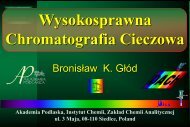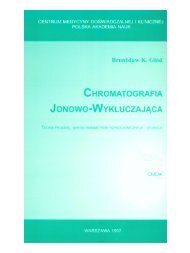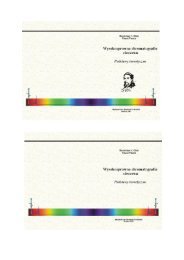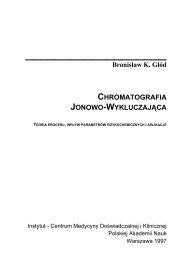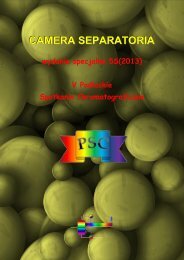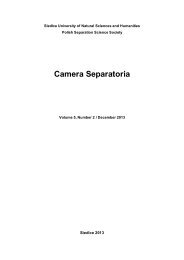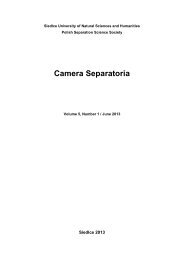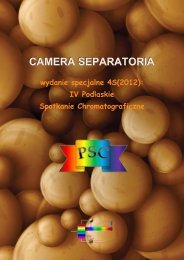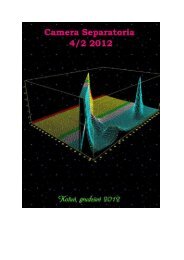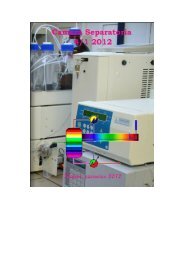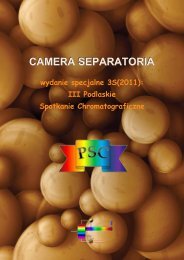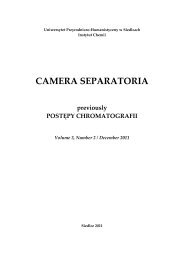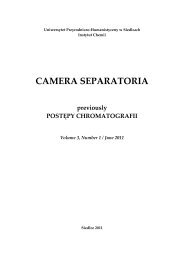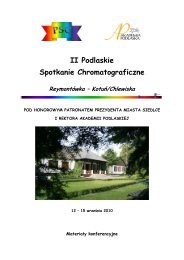CamSep 2
You also want an ePaper? Increase the reach of your titles
YUMPU automatically turns print PDFs into web optimized ePapers that Google loves.
Program temperatury: 35 o C (izotermicznie 5 min) - narost 4 o C/min – 260<br />
(izotermicznie 20 min).<br />
Parametry spektrometru<br />
Temperatura źródła jonów (EJ, 70 eV) 200 o C, temperatura linii 200 o C.<br />
Tryb SCAN do 300 m/z, tryb SIM w zakresie 77-91 m/z. Czas skanowania 0,5 s.<br />
WYNIKI I DYSKUSJA<br />
Na rysunkach 1-3 przedstawiono chromatogram uzyskany w trybie<br />
SCAN. Na rysunku zaznaczono pogrubionymi cyframi zidentyfikowane związki.<br />
Rysunek 1. Identyfikacja: (1) heksanal; (2) 2-metylocyklopentanon; (3) benzaldehyd; (4) heptanol;<br />
(5) 1-okten; (6) cykloheptanon; (7) keton 2-furylo-metylowy; (8) 3-oktanon; (9) 2,3 dimetylocyklopent-2-en-1-on;<br />
(10) o-krezol; (11) 2-izopropylocykloheksanol; (12) keton metylo-fenylowy;<br />
(13) 1-dekanal; (14) 1-etylocykloheksen; (15) m-krezol; (16) 2,3,4 – trimetylocyklopent-2 -en-<br />
-1-on; (17) – 2,3 – dimetylo fenol; (18) 2 – formylotiofen<br />
Rysunek 2. Identyfikacja: (19) cykloheksylometyloketon; (20) 2,4- dimetylofenol;<br />
(21) 2,6-dimetylofenol; (22) 3-vinylocykloheksanon; (23) 3-etylo-5-metylofenol; (24) 1,2,4,5 – tetrametylobenzen;<br />
(25) 3-metoksy,4-propoksyfenol ; (26) 2,3,5-trimetylofenol; (27) styren;<br />
(28) dekadienal; (29) 2,3,5-timetylobenzaldehyd<br />
134




